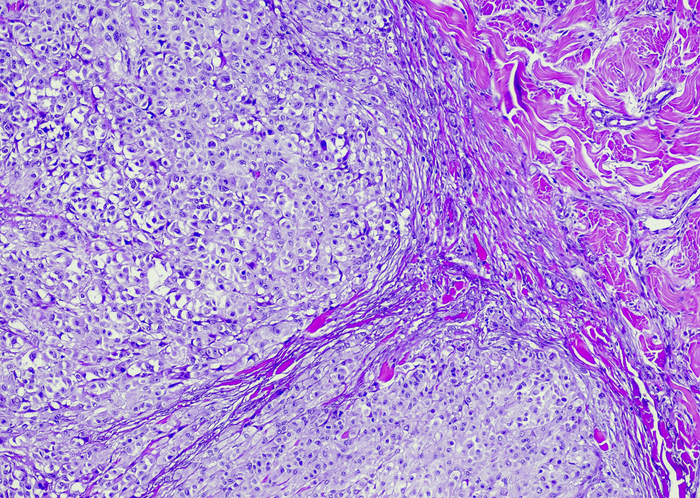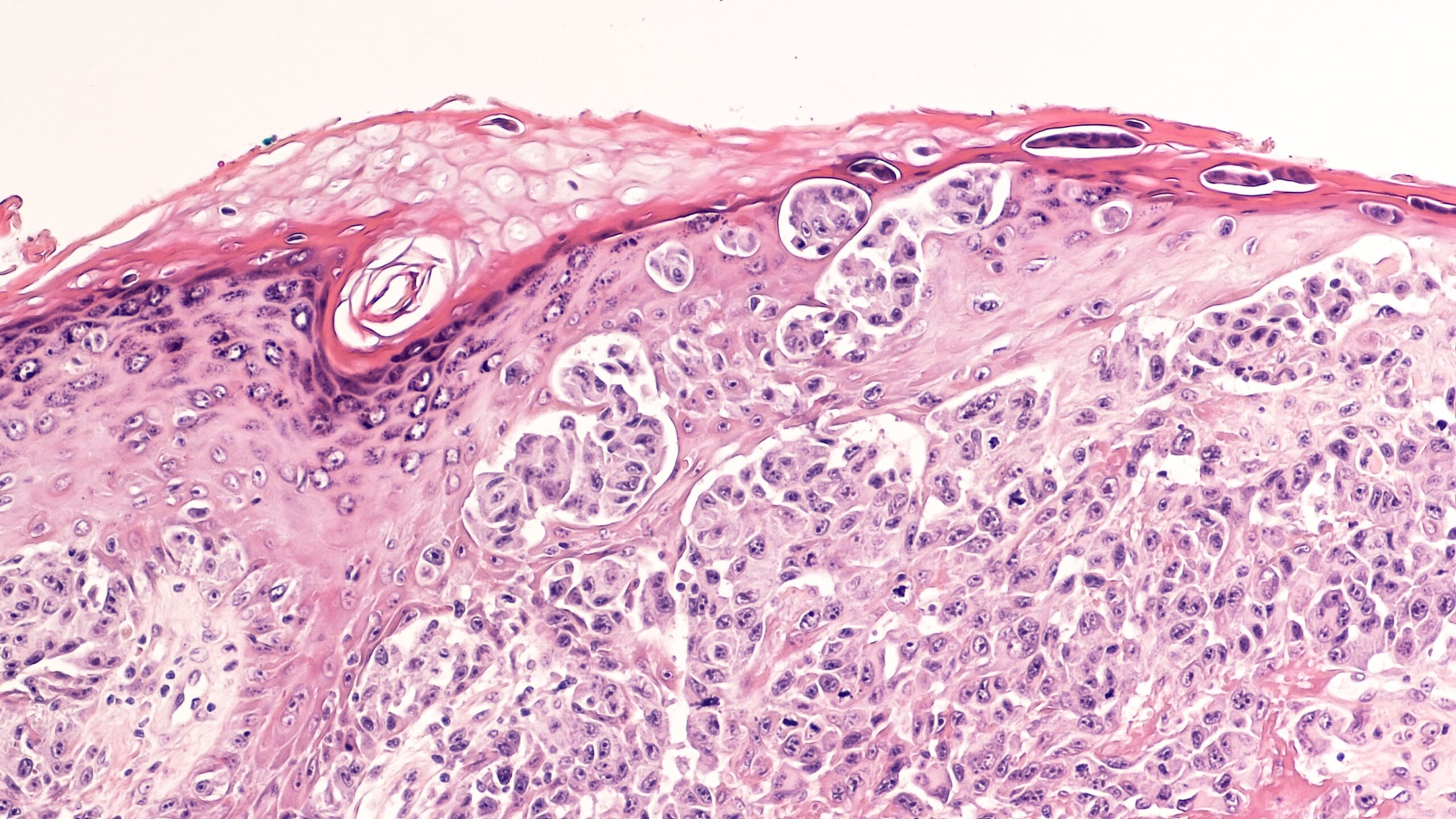
According to a press release distributed by Moffitt Cancer Center, researchers have uncovered differences at the single-cell level of melanoma that can predict responses to initial targeted BRAF inhibitor treatments. Their findings were published in EBioMedicine.
To conduct this study, researchers with Moffitt Cancer Center’s Donald A. Adam Melanoma and Skin Cancer Center of Excellence assessed the variables to BRAF treatment by evaluating RNA expression patterns in single melanoma cell lines along with patient samples. The results showed that melanoma cells can exist in four different states that show distinct gene expression patterns. The researchers’ analysis predicted of the four states that:
- State 1: Cells that divided more frequently and were more sensitive to BRAF inhibitors
- State 2: Cells that were less proliferative with a higher level of MAPK signaling
- State 3: Cells enriched for expression of the genes EGFR, c-JUN and Axl and were more resistant to BRAF inhibitors
- State 4: Cells undergoing cell death
Moreover, their research revealed that State 1 was critical to maintaining drug sensitivity by maintaining a population of cells. They found that cell lines in State 1 without a population of cells exhibited more resistance to BRAF treatment. “Our goal was to achieve initial tumor shrinkage and then to maintain sensitive cells within the tumor, preventing the uncontrolled expansion of the more resistant cellular states,” said Inna Smalley, Ph.D., a member of Moffitt’s Department of Tumor Biology in the press release.
#Melanoma variability at the single-cell level predicts treatment responses https://t.co/gECZhTPu2Q
— Medical Xpress (@medical_xpress) October 8, 2019
Dr. Smalley continued by saying: “Our findings further provide the proof-of-concept that resistance can be delayed through adaptive scheduling of existing FDA-approved drugs, with the advantages of reduced drug exposure and toxicity to the patient.”
Melanoma variability at the single-cell level predicts treatment responses https://t.co/tKHfzzSRqs
— Cancer Research News (@CancerStudyNews) October 8, 2019
Melanoma variability at the single-cell level predicts treatment responses https://t.co/4EY1ZWkl1s via @instapaper
— James Igoe (@JamesJosephIgoe) October 8, 2019







 © 2025 Mashup Media, LLC, a Formedics Property. All Rights Reserved.
© 2025 Mashup Media, LLC, a Formedics Property. All Rights Reserved.